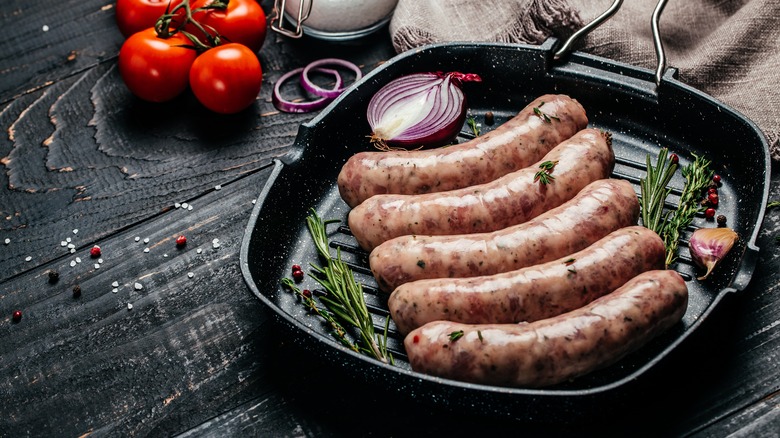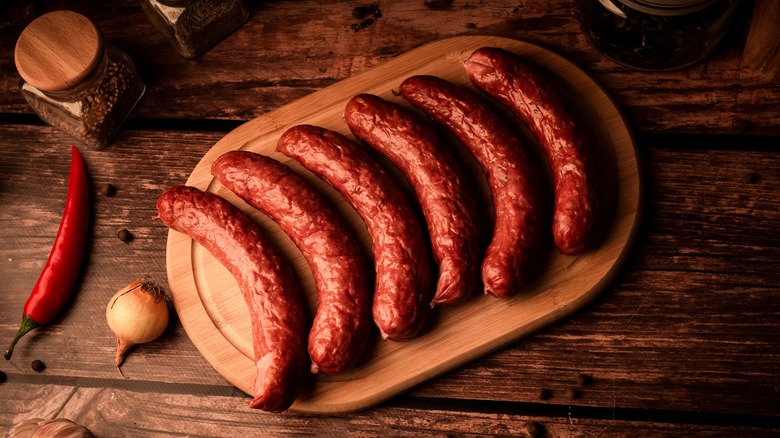Can You Substitute Cooked Sausage With Raw Sausage?
Sausages are a fan-favorite for meat eaters for a reason. There are several different kinds of sausage available, which range in flavors from spicy to sweet and can be made from pork, chicken, beef, or turkey.
Sausages may seem like something we've come up with in the last few hundred years. But in reality, there is record of them dating as far back as Homer's Odyssey in the 8th or 9th century B.C.E. and being invented to preserve blood and small scraps of meat (via Sausage House). It is remarkable that something we invented thousands of years ago is still in use and celebrated today. We put sausage in almost everything, from sausage gravy to ricotta lasagna to give our dishes the hearty flavor we love.
As with any other kind of meat, sausage comes with its hazards: You must know how to properly handle, prepare, and cook sausage before you eat it to ensure the safety of your health. But inexperienced cooks might substitute the cooked sausage with raw sausage without thinking of the consequences.
Adjust your recipes accordingly
Meat Safety informs us that when cooking with raw sausage, the internal temperature must reach 160 degrees Fahrenheit before it is safe to consume. This can be accomplished by parboiling raw meat before cooking it or using a slow-cooker. But cooked sausage is a different matter: It is already safe to eat and only needs to be reheated, via BBQ Host.
So, while you can use raw sausage in recipes that call for cooked, you will have to adjust the cooking temperature and time of cooking.
Raw sausage will take longer to cook and needs to reach a high internal temperature before eating or else you risk getting a foodborne illness, according to the U.S. Department of Agriculture. So, if your recipe calls for cooked sausage, do not make the mistake of adding raw sausage directly into the recipe. Instead, cook off the raw meat first and then add it to the original recipe. On the other hand, if a recipe calls for raw sausage, but you only have cooked, feel free to lower the temperature or the cooking time so the meat doesn't dry out or add a little moisture to the pan.

